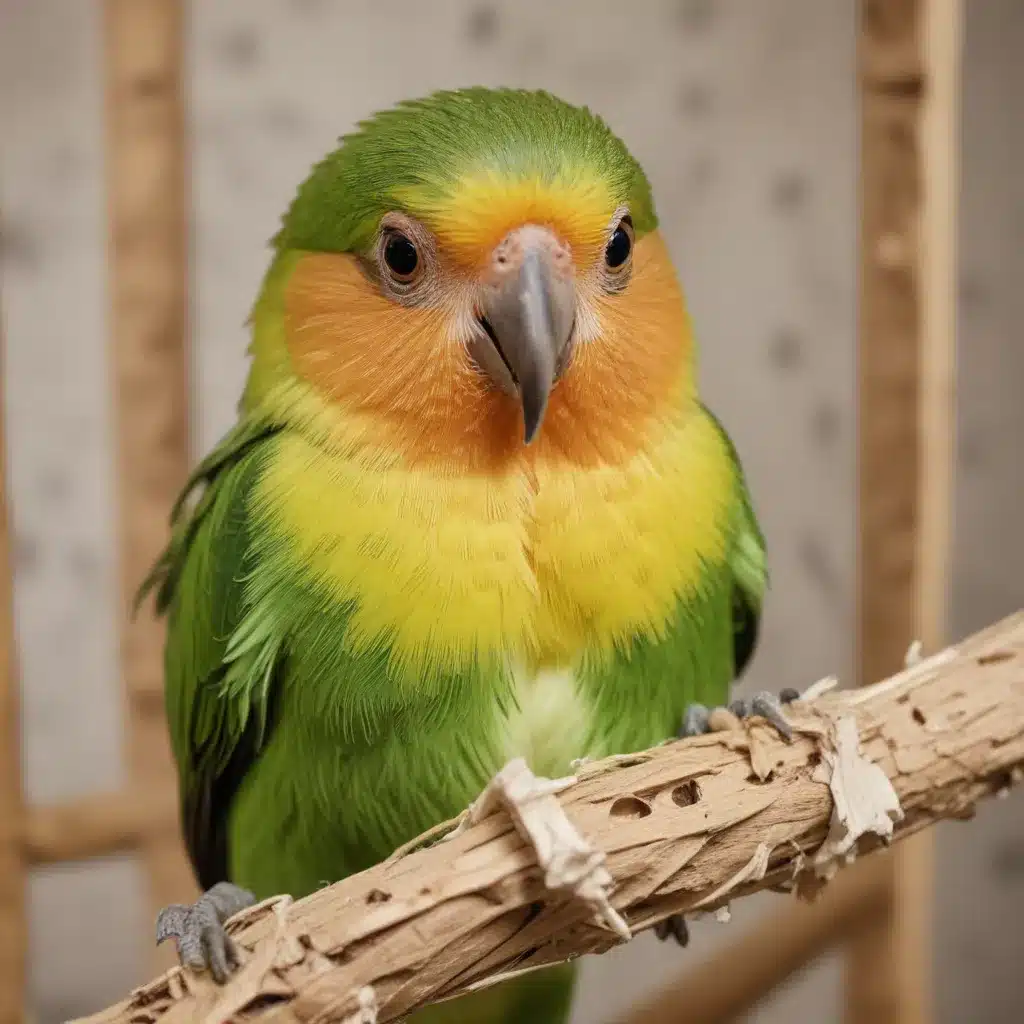
As an experienced avian caretaker and expert in the world of feathered companions, I understand the importance of providing your beloved birds with enriching activities to keep their minds and bodies active. One of the most fundamental needs for many bird species is the innate drive to chew and shred – a behavior that not only satisfies their natural instincts but also contributes to their overall health and well-being.
Avian Chewing Behavior
Importance of Chewing for Birds
Chewing is an essential part of a bird’s daily routine, serving multiple purposes beyond mere entertainment. This behavior helps maintain the sharp edge of their beaks, which are constantly growing and in need of wear and tear to prevent overgrowth. Additionally, the act of shredding and manipulating objects helps strengthen the muscles in a bird’s feet and beak, promoting dexterity and coordination.
Types of Chewing Behaviors
Birds exhibit a wide range of chewing behaviors, from delicately picking at soft materials to vigorously tearing through tough surfaces. Some species, like cockatoos and macaws, are particularly known for their voracious chewing tendencies, while others, such as budgies and canaries, may be more inclined towards gentle nibbling. Regardless of the specific chewing style, providing appropriate outlets for this natural behavior is crucial for your feathered friend’s physical and mental well-being.
Chew-Proof Toy Design
Designing chew-proof toys for birds can be a challenging task, as their powerful beaks and persistent nature can quickly destroy even the sturdiest of commercial offerings. However, by understanding the underlying principles of avian toy construction, you can create long-lasting, engaging toys that will satisfy your bird’s need to shred without compromising their safety.
DIY Avian Toy Creation
Material Selection
When crafting DIY toys for your bird, it’s essential to choose materials that are safe, durable, and appeal to their natural instincts. Avoid any materials that could potentially splinter, fragment, or pose a choking hazard, such as soft plastics or thin wooden dowels. Instead, opt for sturdy, natural materials like untreated hardwoods, thick ropes, and tough cardboard or paper products.
Toy Construction Techniques
The construction of your DIY toys should prioritize both durability and accessibility. Consider layering different textures and materials to create engaging, multi-sensory experiences for your bird. Incorporate features like compartments, sliding panels, and hanging elements to encourage your feathered friend to explore and manipulate the toy. Experiment with various attachment methods, such as knotted ropes or metal clips, to ensure the toy’s stability and longevity.
Safety Considerations
Always prioritize your bird’s safety when designing and assembling DIY toys. Carefully inspect each item for any sharp edges, small parts, or potential choking hazards. Avoid using toxic paints, glues, or other substances that could be harmful if ingested. Regularly monitor your bird’s interactions with the toys and be prepared to retire or modify any that show signs of wear or damage.
Engaging the Senses
Visual Stimulation
Birds are highly visual creatures, and incorporating vibrant colors, contrasting patterns, and eye-catching shapes into your DIY toys can pique their interest and spark their curiosity. Consider using a variety of hues, from the bold and striking to the more subtle and natural, to appeal to your bird’s unique preferences.
Auditory Engagement
In addition to visual stimulation, incorporating sounds into your DIY toys can add an extra layer of engagement for your feathered friend. Experiment with materials that produce gentle rustling, jingling, or other intriguing noises when manipulated, encouraging your bird to explore and interact with the toy.
Tactile Exploration
The sense of touch is equally important for birds, and your DIY toys should offer a diverse range of textures for your bird to discover. From smooth, polished surfaces to rough, fibrous materials, providing a variety of tactile experiences will satisfy your bird’s natural curiosity and encourage them to engage with the toy in new and exciting ways.
Bird-Friendly Shredding Toys
Paper-Based Shredders
One of the most straightforward and cost-effective DIY toy options for birds is the humble paper-based shredder. Providing your bird with a steady supply of untreated, uncolored paper, cardboard, or even paper bags can satisfy their chewing needs while also promoting natural foraging behaviors. Arrange the paper materials in a way that encourages your bird to dig, rip, and shred to their heart’s content.
Wooden Chew Toys
For birds with a penchant for more substantial chewing, wooden toys can be an excellent choice. Untreated hardwoods, such as ash, maple, or oak, offer a satisfying texture and resistance that can keep your bird entertained for hours. Incorporate different shapes, sizes, and attachment methods to create a diverse range of wooden chewing options.
Foraging Puzzle Toys
Combining the element of chewing with the challenge of problem-solving, foraging puzzle toys are a fantastic way to engage your bird’s natural foraging instincts. These toys often feature hidden compartments, sliding panels, or intricate pathways that your bird must navigate to uncover hidden treats or nesting materials. The act of manipulating the toy to access the rewards can provide endless hours of enrichment and mental stimulation.
Regardless of the specific DIY toy you choose to create, the key is to continuously rotate and introduce new options to keep your bird’s interest piqued. By offering a diverse array of chewing and shredding opportunities, you’ll not only satisfy their innate needs but also promote a healthy, stimulating environment that supports their overall well-being.
For more expert avian advice and inspiration, be sure to visit Mika Birds Farm – your one-stop destination for all things feathered and fabulous!


